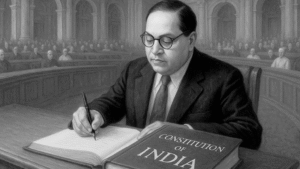Delhi EV Policy 2.0: Bold Steps Towards 95% Electric Vehicle Adoption by 2027
The Delhi government has announced the Delhi Electric Vehicle (EV) Policy 2.0, taking a bold leap toward cleaner air and greener streets. The new policy builds on the 2020 EV Policy that aimed for 25% electric vehicle registrations by 2024. Now, Delhi is aiming much higher—95% of all new vehicle registrations to be electric by 2027.
Let’s break down what this new Delhi EV policy means for residents, transporters, and businesses in Delhi.
Key Highlights of Delhi EV Policy 2.0
1. Phase-Out of CNG and Fossil-Fuel Vehicles
- CNG Autorickshaws: No new permits for CNG autos will be issued after August 15, 2025. Moreover, existing CNG autorickshaws will not be renewed post this date. They’ll be replaced with e-auto permits.
- Two-Wheelers: Registrations for new fossil fuel-powered two-wheelers will stop after August 15, 2026.
- Three-Wheeler Goods Vehicles: Diesel and petrol-run three-wheelers for goods transport will be discontinued from August 15, 2025.
This aggressive timeline makes Delhi the first Indian city to formally propose such a sharp shift away from fossil fuels.
2. Incentives for Electric Vehicles
To encourage quick adoption, the draft policy offers direct financial subsidies:
- E-Cycles: Up to ₹5,500 subsidy for electric cycles.
- E-Rickshaws and Light Commercial EVs: ₹30,000 incentives per vehicle.
- Battery Swapping Stations: Policy support for battery-swapping tech to reduce downtime and range anxiety.
These incentives make EVs more accessible to middle-income families and small businesses.
3. Boost to Public Transport Electrification
Delhi is planning to make all intra-city buses electric, further decarbonizing its public transport system. This will reduce greenhouse gas emissions drastically and improve public health outcomes.
4. Infrastructure Expansion and Mandates
- Residential and Commercial Buildings:
- New constructions must reserve 20% parking spots for EV charging stations.
- Existing buildings must convert at least 5% of their parking into EV-compatible infrastructure.
- Charging Points: Widespread deployment of public and private EV chargers will be mandated across the city.
5. Why This Matters
Delhi has been battling severe air pollution for years. The transportation sector is a major contributor. EV Policy 2.0 is a direct response to:
- Rising respiratory health issues.
- Commitments to India’s Net Zero goals by 2070.
- Growing consumer interest in cleaner transport options.
Challenges Ahead
While ambitious, the policy also faces several hurdles:
- Charging Infrastructure: Sufficient charging stations must be built and maintained.
- Consumer Awareness: Public campaigns are needed to educate citizens about subsidies and long-term EV benefits.
- Transition Support for Drivers: Many auto and two-wheeler drivers may need financial help or training to shift to electric.
EVs & the Environment: Pros, Cons, and Practical Realities
While EVs offer clear advantages for air quality and public health, there are also practical issues that need attention:
1. Pollution Control with EVs:
- Electric vehicles produce zero tailpipe emissions, significantly reducing air pollutants like PM2.5, NOx, and CO.
- Switching from petrol/diesel to EVs could reduce vehicular pollution by 60–70% in urban areas like Delhi.
- Cleaner air leads to fewer respiratory diseases, lower healthcare costs, and better overall quality of life.
2. Are EVs Good or Bad for the Environment?
- Good: No emissions while driving, quieter roads, and reduced dependency on fossil fuels.
- Concerns: Battery manufacturing does consume resources and produces emissions, but over the vehicle’s life, EVs still have a much smaller carbon footprint than fossil-fuel vehicles.
3. EV Vehicle Life & Maintenance:
- Battery lifespan: Typically 6–10 years, depending on usage and climate.
- Maintenance cost: EVs have fewer moving parts and no oil changes, so they are cheaper to maintain in the long run.
- However, battery replacement (after 6–8 years) can cost a significant amount, depending on the model.
4. Why Are EV Prices Still High?
- Battery cost accounts for 40–50% of total vehicle cost.
- Import duties, low local production, and lack of subsidies on premium models also raise prices.
- Prices are expected to fall as battery tech improves and mass production increases.
5. The Charging Station Problem:
- EVs usually offer 150–400 km range, which is fine for daily city travel but not ideal for long routes.
- As more EVs hit the road, Delhi will need charging stations every 1–2 km in urban zones.Without this, people may face long queues or “range anxiety”, especially during peak hours.
- Fast chargers and battery swapping hubs can help but need government and private investment.
Final Word
Delhi’s EV Policy 2.0 shows strong political will to combat pollution and embrace sustainability. With the right mix of incentives, infrastructure, and enforcement, Delhi could become a model city for electric mobility in India.
The policy is currently under review and open for feedback from stakeholders. If passed, this policy will redefine how Delhi moves—and breathes—over the next few years.
External Sources:
Share this content:











Post Comment